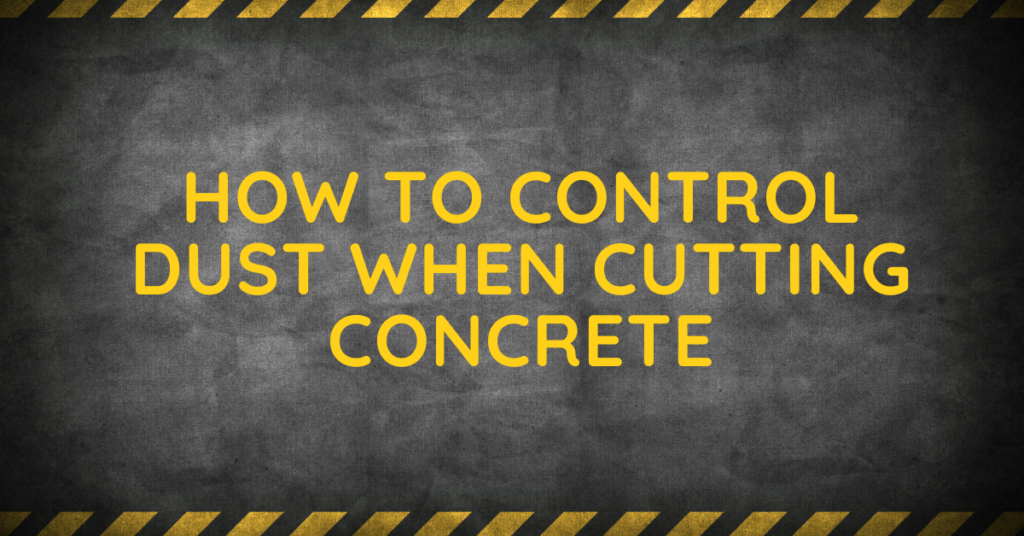The Methods for controlling dust When Cutting Concrete
Here are some methods that will allow the workers to safeguard themselves from the harm of dust.
- Wet Cutting
- Exhaust System
- Dust Respirators
Check Out Our: Core Cutting in Abu Dhabi
Wet cutting
Wet cutting is a technique widely used in the construction industry to safeguard workers from dust and silica. This technique allows the workers to put a bucket near the cutting place. And it was filling a hole in the bucket with water. Whenever the workers start their work on the concrete, they place the holed bucket filled with water on the side of their working site.
Moreover, there are cutting and grinding equipment in the market that come with water sprinkling features. These tools start sprinkling water on the point where the cutter or grinder is at work. These tools aid a lot in reducing the dust and silica from affecting the construction industry workers getting bad effect.
This is an engineering hack that controls and eliminates dust. And it is widely in use. On the other hand, workers in the construction industry are recommended to inspect the site before starting out the work and adequately planning on how to execute the job. With this, they need to spend some time planning how to evade the harmfulness caused by the dust.
Exhaust system
The next option on the list is using the HEPA Vacuum or an exhaust system. This system is also known as the ventilation system. These are industrial vacuums designed to remove dust from the construction site. These systems are in place once there are no chances of reducing the dust at the source. This is due to the fact that the operations of removal of concrete lie in a difficult position.
These systems are equipped with HEPA filters that are designed to purify the air from all minute dust particles letting the workers breathe air free from dust.
Dust Respirators
Dust Respirators are used depending on the site’s layout. Further, it depends upon the mason’s and construction workers’ requirements. Normally it is an industrial norm to wear respiratory protective equipment, commonly referred to as RPE. These dust respirators are used in places where all the above-mentioned procedures are not valid. There are some perquisites for applying these dust respirators. These are to train your workers with these tools so that they know how to use them and eventually prevent them from getting the harmful effect of dust. Further, these Dust Respirators can be divided into two options.
- Half Face Dust Respirators
- Full Face Dust Respirators
Half Face Dust Respirators
They are used in open spaces and can also be used in closed spaces as well. Moreover, these respirators are capable of preventing workers from exposure to up to 10 times the OSHA PEL.
Full Face Dust Respirators
These respirators are capable of preventing the workers from exposure to up to 50 times the OSHA PEL. In addition, they are also being used in open spaces and can also be used in closed spaces.
FAQs on How to Control Dust When Cutting Concrete
Q: Why is it important to control dust when cutting concrete?
A: Controlling dust when cutting concrete is crucial for several reasons. Firstly, concrete dust contains harmful crystalline silica particles that can pose serious health risks when inhaled, leading to respiratory issues and lung diseases. Additionally, excessive dust can reduce visibility, impairing the operator’s ability to work safely. Proper dust control measures promote a healthier work environment and minimize the risk of accidents.
Q: What tools and equipment can I use to control dust during concrete cutting?
A: There are several effective tools and equipment options to control dust while cutting concrete. Some common choices include wet-cutting saws equipped with water supply systems to suppress dust at the source. Dust shrouds or vacuum attachments for power tools like angle grinders can also be utilized to capture airborne particles. Additionally, using high-efficiency particulate air (HEPA) filters with dust extractors ensures efficient containment and removal of fine dust particles.
Q: How can I prepare the work area to enhance dust control during concrete cutting?
A: Preparing the work area is essential for effective dust control. Before starting, isolate the cutting area using plastic sheeting or temporary barriers to minimize dust dispersion. If possible, work outdoors or in well-ventilated areas to disperse dust quickly. Positioning the equipment strategically can also help ensure that dust is captured efficiently by vacuum systems or water suppression methods.
Q: What personal protective equipment (PPE) should I wear when cutting concrete to protect against dust exposure?
A: Wearing the appropriate personal protective equipment is vital for safeguarding against dust exposure. At a minimum, always wear a properly fitted N95 or N100 respirator mask to filter out fine particles. Safety goggles or a full-face shield protect your eyes from flying debris, and sturdy work gloves shield your hands. Coveralls and disposable shoe covers can prevent dust from settling on your clothing and footwear.
Q: How should I clean up after concrete cutting to ensure proper dust containment?
A: After completing the cutting task, follow these steps for effective dust cleanup: a. Turn off all cutting equipment and dust collection systems. b. Allow the dust to settle before attempting to clean. c. Use a broom or low-pressure air blower to sweep up visible dust and debris. d. Wet mop the area to capture any remaining dust particles. e. Empty dust collection containers into sealed bags for proper disposal. f. Thoroughly clean and maintain all dust control equipment for future use.
